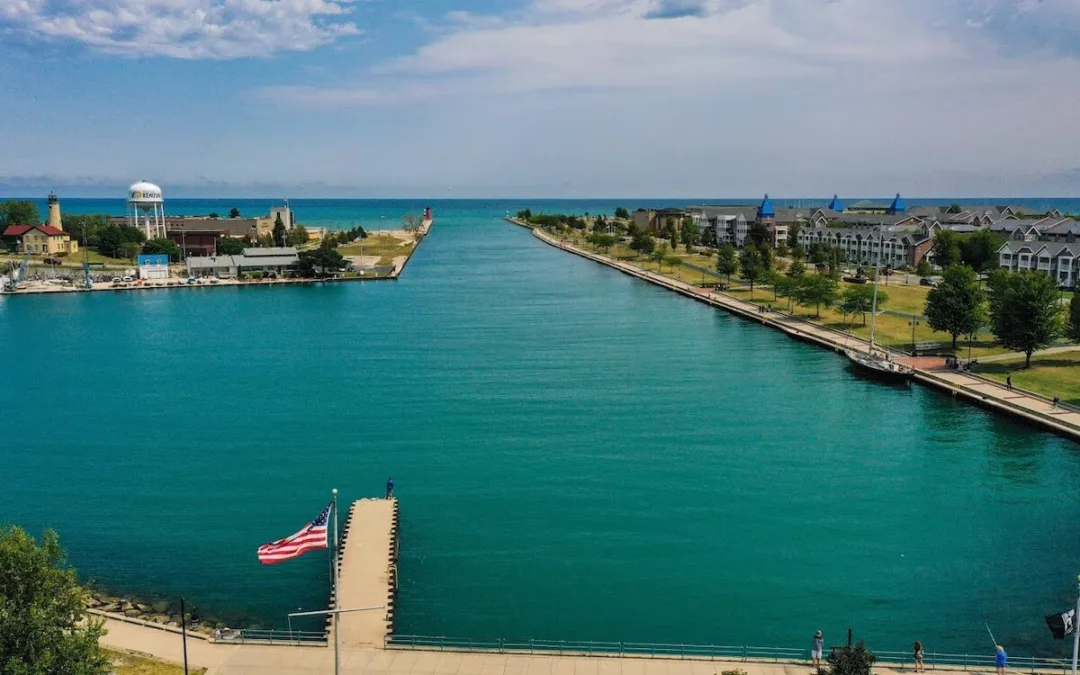
#image_title
#image_title
As exploratory drilling wraps up in Oneida County, it could be a decade before a mine comes to fruition, if at all.
Ronald Zabler considers his family’s property in rural southeastern Oneida County to be “sacred land.”
Zabler’s grandfather bought 80 acres of secluded wilderness in the county upon returning from World War II. The area, just off the Wolf River, has remained pristine ever since. But the family’s sacred land — and the lakes and waterways in the massive Wolf River watershed — may be tainted, Zabler fears, by a potential sulfide mining operation next door.
“When you start disrupting one little system, it snowballs into other things affected,” said Zabler, a self-described anti-mine activist, conservationist, and former plumber who is out of work due to injury.
Badger Minerals, a Michigan-based subsidiary of a Candian mining corporation, is currently wrapping up some minor test-drilling adjacent to the Zabler property to help determine whether the company will propose a full sulfide mining operation for gold, silver, and other minerals.
Should Badger Minerals decide to pursue a mine there, the process could take up to a decade before any minerals are extracted, but significant concern over the potential environmental ramifications remain.
“It seems that it would be difficult to do it without having some sort of environmental impact,” said Bob Mott, an Oneida County supervisor whose district includes the possible mine site. “Everybody has to make the decision how much is too much.”
Sulfide mining can pose “several significant environmental risks,” according to the Minnesota Center for Environmental Advocacy, because sulfuric acid is released through sulfide mining. The acid can then pollute water sources, which in turn negatively impacts wildlife, the environment, and humans.
A 2012 study of 14 of the nation’s 16 copper sulfide mines found that all 14 have had at least one containment failure such as pipeline breaches and overflows that released sulfuric acid into the surrounding environment.
For the Wolf River watershed, which thrives on tourism, the effects of significant pollution could be dramatic.
Mott, chairman of the county Conservation Committee, spoke to UpNorthNews Tuesday immediately after leaving the test-drilling site, where he said Badger Minerals was beginning its sixth and final sample extraction (the company was permitted for up to 10 samples, which are about 18 inches in diameter).
Mott lives a couple miles away on Pelican Lake, which could be affected by pollution from a mine. He said that it’s not at all clear yet what the environmental impact would be from a mine because there is no formal proposal, but said he was not overly concerned with the test drilling itself.
“The actual impact of the exploratory work is minimal,” he said, saying it would be easy to miss where the core samples were taken. (About 100 acres of forest surrounding the test-drilling sites has been clear-cut, but Mott said that was almost entirely due to an unrelated logging operation.)
The odds of the test-drilling site developing into a mine are statistically low. Between 1 in 5,000 and 1 in 10,000 test sites become mines, according to the U.S. Department of Agriculture’s Forest Service.
“It’s a long way from having a mine,” said Ken Bradbury, director and state geologist for the Wisconsin Geological and Natural History Survey. “The company may decide there’s not enough ore or production there to justify a mine, or they might conclude that there is, but we don’t know what they will conclude from this exploration.”
Badger Minerals may take its next steps as early as winter, Mott said. That could mean the company returning for additional samples or beginning the years-long approval process.
The current test-drilling is the first in Wisconsin since 2012 and the first in Oneida County since the 1980s, according to WXPR.
The drilling was largely made possible by the 2017 repeal of the state’s long-standing “prove it first” law, which required mining companies to prove their mines would not cause pollution or environmental damage before they started drilling.
The effort to repeal was led by former Republican state Sen. Tom Tiffany, who represented the area. Tiffany is now representing the state’s 7th Congressional District.
Democrat Ed Vocke, who is running against Rep. Mary Felzkowski, R-Irma, to fill Tiffany’s former Senate seat, is opposed to the mine and criticized the decision to repeal the “prove it first” law.
“The reason the ‘prove it first’ provision was in place was because, literally, there’s not another place to point to in the world where this has been done safely,” Vocke said. “…This isn’t, ‘Oh, oops, we spilled and we’ll clean it up!’ It doesn’t work like that. This is centuries of degradation if and when this goes wrong.”
Mott said he is not anti-mining, but thought it was foolish to repeal “prove it first.” Bradbury said that although the law provided extra environmental protections, other state statutes and Department of Natural Resources regulations are still fairly robust.
“There would be a lot of monitoring, a lot of attention, a lot of investigation prior to moving forward with a mine,” said Bradbury, who had a hand in state review on the closed Flambeau mine and proposed Crandon mine.
Vocke argued that the possible mine is a statewide issue that warrants extreme attention from the Department of Natural Resources because of how interconnected the state’s watersheds are.
The Wolf River drains into the Fox River, which in turn drains into Lake Michigan. Zabler raised the same concern, saying that all of the state’s eastern lakeshore communities could be damaged by pollution.
But that’s not quite the case. Bradbury said the level of dilution would be so high there would essentially be no effect on distant communities.
“The concerns are near the mining site,” Bradbury said. “Small tributaries near the mining site are going to be vulnerable. Dilution is going to be a big factor the farther away and the farther downstream you go.”
Politics

Biden administration bans noncompete clauses for workers
The Federal Trade Commission (FTC) voted on Tuesday to ban noncompete agreements—those pesky clauses that employers often force their workers to...

Opinion: Trump, GOP fail January 6 truth test
In this op-ed, Milwaukee resident Terry Hansen reflects on the events that took place on January 6, the response from Trump and other GOP members,...
Local News

Readers Poll: Top Bowling Alleys in Wisconsin
Looking for the best bowling in Wisconsin? Look no further! Our readers have spoken in our recent poll, and we have the inside scoop on the top...

8 Wisconsin restaurants Top Chef judges are raving about
Top Chef’s 21st season is all about Wisconsin, and on-screen, it’s already apparent that the judges feel right at home here. But, while filming in...



